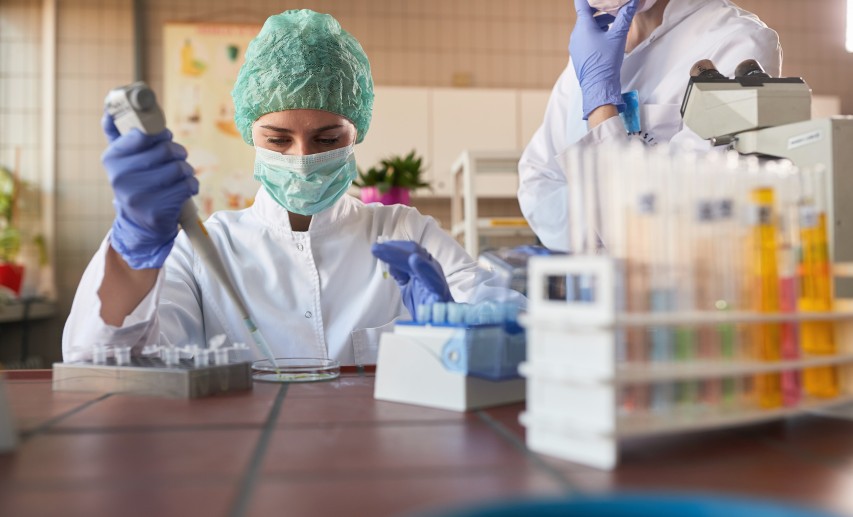12 February 2018 | Leitfaden
LanguageDELong version of this document
Quite often, the industrial manufacture of food additives differs significantly from the production processes for conventional foodstuffs. This VCI Guide is about the interpretation and implementation of the food law requirements regarding food additives manufacture. As an industry guide for good manufacturing practice (GMP) in the meaning of the Food Hygiene Regulation, it is addressed to manufacturers of food additives.

Background
Regulation (EC) No 178/2002 lays down the general principles and requirements of food law and food safety procedures. Food additives fall under the definition of “food” according to Article 2 of the Regulation. Consequently, the general food law rules also apply for food additives.
Regulation (EC) No 852/2004 (Food Hygiene Regulation) stipulates general rules on food hygiene for food business operators. This Regulation applies for all stages of production, processing and distribution of food (“from farm to fork”). Thus, it is applicable to the manufacture of food additives too.
Quite often, the industrial manufacture of food additives differs significantly from the production processes for conventional foodstuffs. This VCI Guide is about the inter-pretation and implementation of the food law requirements regarding food additives manufacture. As an industry guide for good manufacturing practice (GMP) in the meaning of the Food Hygiene Regulation, it is addressed to manufacturers of food additives.
Goal of the Food Hygiene Regulation
The Food Hygiene Regulation wants to ensure a high level of health protection concerning the safety of foodstuffs – from primary production to distribution to consumers. The main responsibility for the safety of a foodstuff rests with the food business operator. Food safety must be ensured at all levels of the food chain, including primary production. Food business operators are under the obligation to comply with the relevant general hygiene rules by putting into practice the methods based on the HACCP principles .
According to Article 2 of the Food Hygiene Regulation, the term “food hygiene” means the measures and conditions necessary to control hazards and to ensure fitness for human consumption of a foodstuff, taking into account its intended use. In Germany, this general hygiene requirement is concretized in the national Food Hygiene Ordinance (Lebensmittelhygiene-Verordnung/LMHV): through the obligation to ward off any “adverse influence”. Therefore, in food additives manufacture all the necessary and suitable measures have to be taken to eliminate adverse influences or sources of hazards or to minimize them as far as technically possible.
Manufacture of food additives
Manufacture
Additives are manufactured using a large variety of different methods. These range from chemical synthesis or fermentative processes to physical methods, enzymatic reactions or the purification of natural substances.
There is a wide range of pre-products – from natural, microbiologically sensitive products to chemical intermediates. Pre-products are processed into food additives by way of suitable methods (e.g. synthesis or purification) and subsequent substance-appropriate filling, storage and transport. Pre-products are not necessarily foodstuffs.
Borderline to other substances
Substances can be manufactured for many different uses. A food additive is given through the intended use in a foodstuff for technological purposes. At that moment in time, all the relevant legal requirements to food additives have to be fulfilled. These include, inter alia, compliance with purity criteria , adequate manufacture , as well as legally compliant packaging and labelling .
Substances that meet these requirements can be designated and labelled as “food additives”. E numbers can be used only if all of the above-mentioned legal require-ments are fulfilled. Compliance with specifications alone is not enough for an E number designation.
Pre-products for food additives manufacture do not need to meet the requirements to food additives. For example, in manufacture within chemical synthesis a pre-product can be a chemical substance that is not a foodstuff.
The VCI Guide elaborates furthermore the following topics:
- Purity criteria
- Hygiene requirements and application of the HACCP concept in food additives manufacture
- HACCP
- Food premises
- Articles and equipment
- Water
- Personal hygiene
- Packaging
- In-house measures and controls
- Imports
- Example: Propylene glycol
You will find the complete VCI Guide with a size of 9 pages in the download section at the top of this page (so-called "Langfassung").
Contact
For questions or suggestions, please feel free to contact us.

Martina Schönnenbeck
Lebensmittelzusatzstoffe, Responsible Care, Sustainable Consumption and Production
- E-mail: schoennenbeck@vci.de